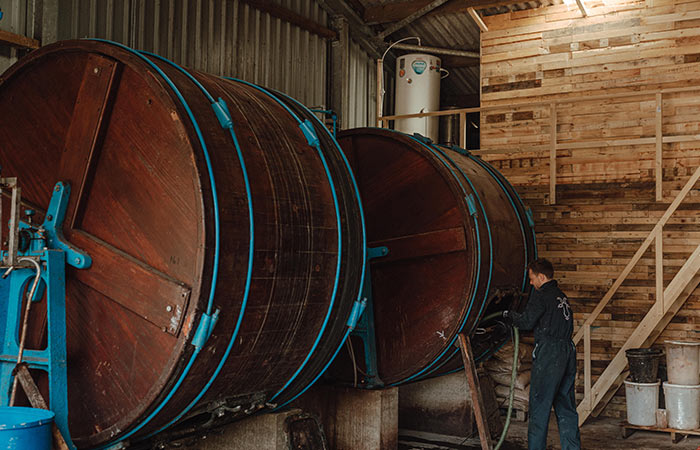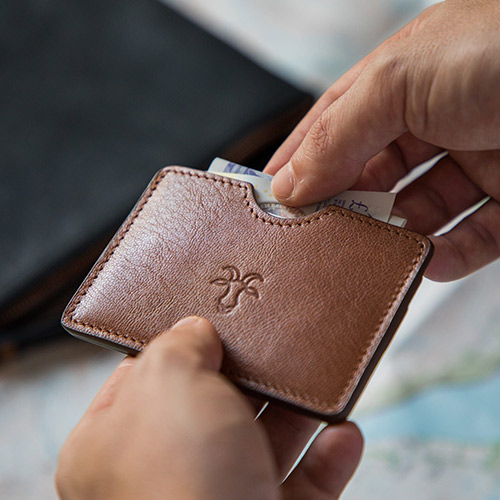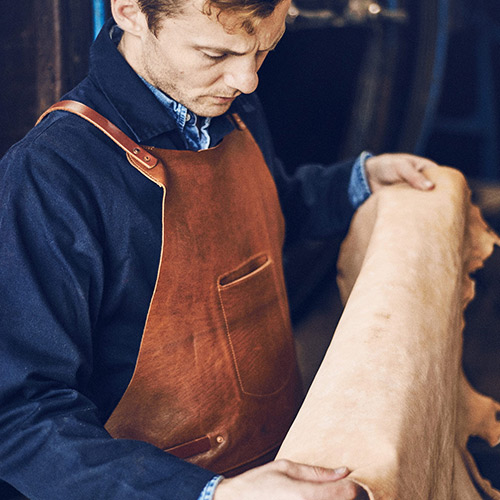
An Interview with
Billy Tannery
I’m was extremely excited when Billy Tannery agreed to answer some questions regarding their leathercraft business not only because they’re based extremely local to me, in Northern England, but also as they’re one of the only leathercraft brands (that I’ve come across) that operate their own Micro Tannery.
Founded in 2016 by childhood friends Jack and Rory their inspiration was based on their discovery of goatskin and the current state of waste going on in Britain. Will little to known experience in leathercraft they set out to build and learn as they went along designing and manufacturing a wide variety of leather goods with a strong focus on sustainability.
We got the opportunity to speak with Jack and ask him about his experience with leathercraft and what exactly it takes to set up your own Tannery.
About Billy Tannery
Billy Tannery is a new kind of leather company. After discovering that not one goat hide left over from the UK food industry was being tanned here, we decided to do something. Tapping into local leather knowledge we built a pioneering microtannery and our sustainable, bark-tanned goat leather now completes the circle from food to leather. Our growing range of quality leather goods is designed and made in England to celebrate this exceptional material.
For anyone unfamiliar with Billy Tannery, tell us a bit about your shop. What made you start a business in leathercraft?
Billy Tannery is a new kind of leather company that began with a discovery. We found out that there were no tanneries producing goat leather in the UK at a time when there were more and more goats being farmed. This meant that nearly all of the goatskins leftover from food production was going to waste – i.e. being burned.
Our journey to find a use for these goatskins led us to build our own small-batch tannery on a farm in the Midlands and launch our own brand of British-made leather goods with help from my co-founder and creative director Rory. In the end, it means that we control the whole process from sourcing through to tanning and making, which means we can pay close attention to all aspects.
Owning your own tannery is quite a feat and unique to most companies in the industry. What made you go down the route of tanning your own leather as opposed to simply purchasing your leather?
It all stems back to the fact that we wanted to find a use for the goatskins that were available but going to waste. There were no tanneries left in the UK that were willing or able to do this, so it left us with only one option – to build our own. Starting from scratch in an industry that has been around for thousands of years is not easy, but I loved the journey of discovery and learning.
Were there any hurdles in starting billy tannery especially with the setup of a micro tannery?
While very small, ours is the first new tannery to be built in the UK for more than 50 years so setting it up involved too many hurdles to mention! We were very lucky to be based in the Midlands, near Northampton which is a center for what’s left of the leather industry. From leather experts at the University of Northampton who helped teach us to the last remaining businesses supplying and maintaining tannery equipment, we wouldn’t have been able to get to where we are today without a lot of support.
What are you’re opinions on the current state of the leathercraft industry, its impact on the environment? Do you think other brands are pulling their weight to help the cause? Where do you see the industry going in the next 30 years?
I think we’re at a really interesting turning point with leather. There is a huge amount of misunderstanding and frankly a lot of misinformation out there about the sustainability of leather that is driven by the extreme vegan agenda and companies developing leather alternatives.
We believe that leather will always play a vital role in making use of a waste product from the food industry but fashion has to be better at telling a positive story. Due to much of the world’s leather production moving to countries with fewer environmental and labor controls, leather has a terrible reputation but it doesn’t have to be that way – and it definitely isn’t in the UK.
It’s great to see a few larger companies like Mulberry and Anya Hindmarsh getting on board with a positive leather message that we have been focused on since we launched. It’s all about producing the lowest impact leather possible, that will last for generations and then, when it has reached the end of its life, biodegrades.
Finally, we always like to ask this question, if you had to choose one other wallet to carry for the rest of your life (that isn’t your own) which one would it be?
That’s a hard one. If it wasn’t one of ours, then I think I’d go for something from Campbell Cole – another company based in the Midlands.
Please tell us a bit about yourself and what you did before you started billy tannery.
I grew up on a farm in Leicestershire but I left the countryside to pursue a career in marketing. After a business degree, this led me to London where I worked on creative projects for huge companies like Disney and Duracell. I loved it but also started to feel the pull towards setting up my own business – something more practical – and also the pullback to the farm.
Once you had decided to launch your brand, how did you get started? What advice would you give to others wanting to get involved with Leathercraft?
When we first started we planned to sell our goat leather to other UK brands, but quickly realized that our small scale wouldn’t lend itself to this approach. Instead, we focused on producing our own British goat leather goods but this is obviously a big undertaking both in effort and cash. So we decided to use crowdfunding to launch our first range so turned to Kickstarter back in 2017. It certainly wasn’t huge by Kickstarter standards but we more than doubled our original goal which started us off on our journey really nicely.
For those looking to get into leathercraft, it’s easier than ever these days. Everything from YouTube tutorials to things like our make-at-home kits and I’d also recommend a great book by our friend Otis Ingrams.
Does goat leather have any unique advantages compared to other traditional leather types?
We often say that goat leather is a wonder material. It’s both soft and durable, thin but also incredibly strong. It also has a beautiful, pronounced grain pattern that varies from skin to skin. You will often find cow leather that has a goat grain printed onto it because it looks so great.
What’s your personal favorite wallet in your collection and what makes it special to you?
We currently have two wallets in our collection, a Cardholder, and a Bifold. Our Bifold is one of our best-selling products from the whole range, but I’ll always have a soft spot for the Cardholder as this is more to my personal taste. I don’t really use cash these days, so three pockets for cards and the occasional folded note are all I need. I have one of our very first Cardholders made from our undyed vegetable tanned leather, so the patina three years in is just stunning.
What does the future hold for billy tannery? Have you any new projects in the pipeline, do you plan to expand?
The future looks really exciting for Billy Tannery. We regularly collaborate with other British brands to show how versatile our goat leather is – most recently on Sneakers and Caps – and we have some great partnerships lined up for 2022 already. We have also been working on our first leathers outside goat and recently worked with furniture designer Sebastian Cox on a cattle hide chair.
Do you have any discount codes or offers for any interested people reading this interview?
We offer a 10% first order discount for signing up to our email newsletter : )


